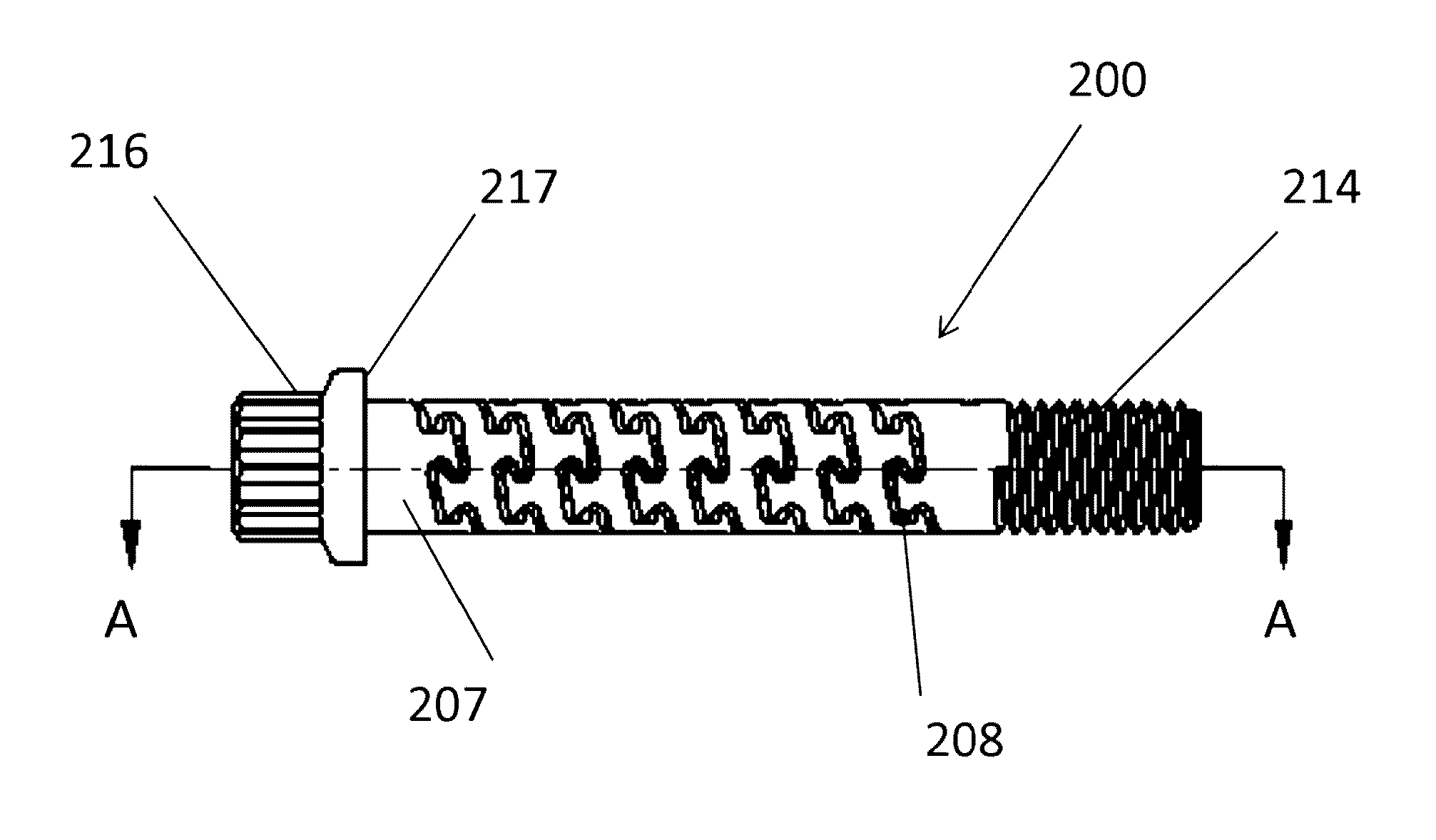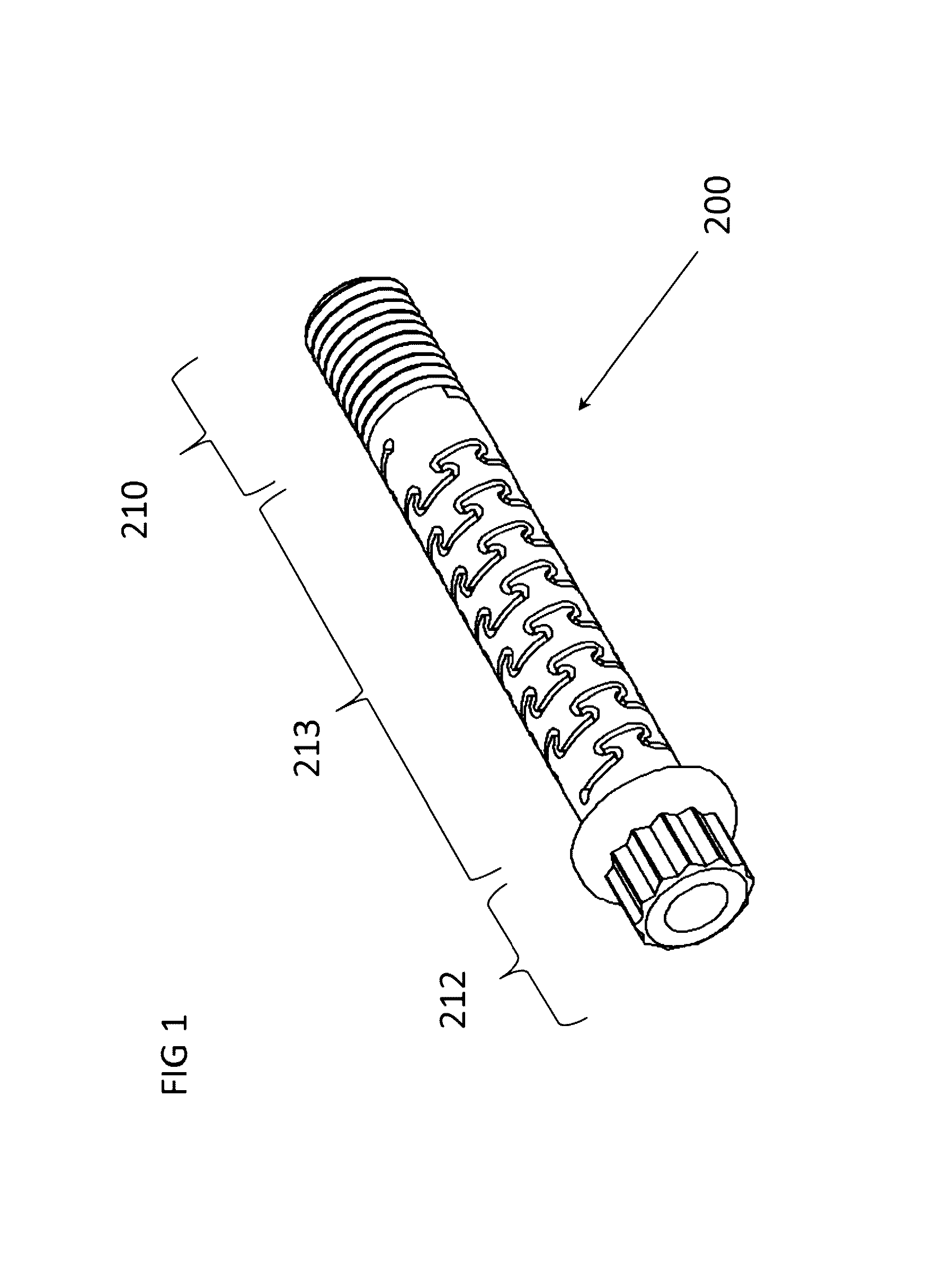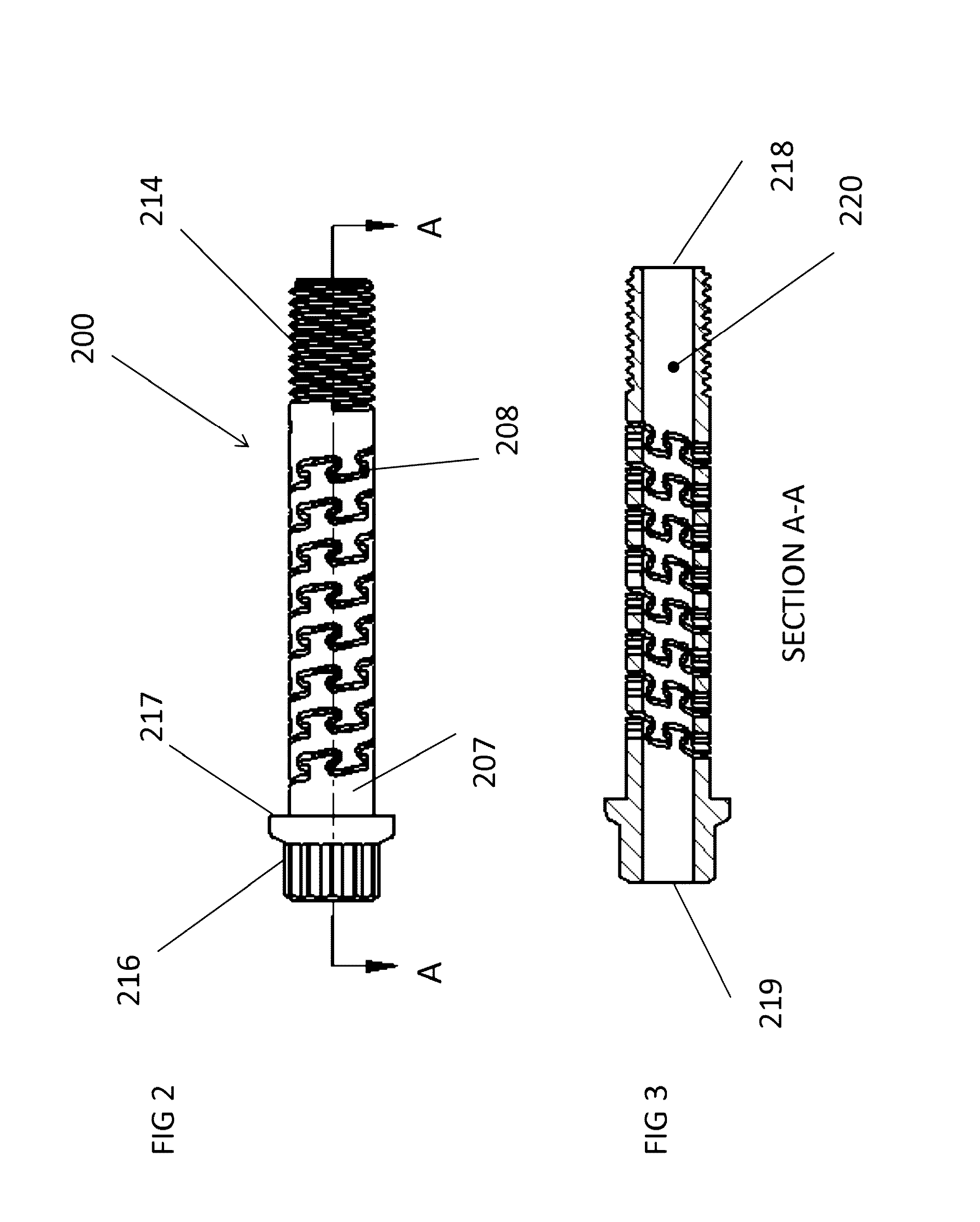Flexible fastening device for industrial use
a flexible and industrial technology, applied in the direction of threaded fasteners, screws, osteosynthesis devices, etc., can solve the problems of inability to use rigid devices, inability to drill another bore, and inability to bend rigid devices, etc., to achieve the effect of increasing the flexibility of the component, increasing the width, and limited flexibility
- Summary
- Abstract
- Description
- Claims
- Application Information
AI Technical Summary
Benefits of technology
Problems solved by technology
Method used
Image
Examples
Embodiment Construction
[0072]The flexible fastening device is composed of a rigid material with a body having a diameter, a length, and multiple defined segments, at least one of which has at least one helical slot to form a flexible segment with exterior threads on at least one of the segments. The leading segment is typically tapered in the case of a screw to provide for forward penetration into the material and is designed to cut a helical groove in a softer material as the screw is inserted. The leading segment may also have a blunt end, as in the case of a bolt, designed to mate with a complementary thread, known as an internal thread, often in the form of a nut or an object that has the internal thread formed into it. The trailing or driving segment is typically has a head shape, which may be pan, dome, round, truss (mushroom), flat (countersunk) or oval shaped, and has a receiving area to receive a rotational force device. The receiving area can employ a wide variety of drive designs, each requirin...
PUM
| Property | Measurement | Unit |
|---|---|---|
| helical angle | aaaaa | aaaaa |
| angle | aaaaa | aaaaa |
| helix angle | aaaaa | aaaaa |
Abstract
Description
Claims
Application Information
 Login to View More
Login to View More - R&D
- Intellectual Property
- Life Sciences
- Materials
- Tech Scout
- Unparalleled Data Quality
- Higher Quality Content
- 60% Fewer Hallucinations
Browse by: Latest US Patents, China's latest patents, Technical Efficacy Thesaurus, Application Domain, Technology Topic, Popular Technical Reports.
© 2025 PatSnap. All rights reserved.Legal|Privacy policy|Modern Slavery Act Transparency Statement|Sitemap|About US| Contact US: help@patsnap.com



